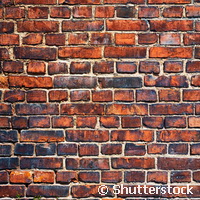'New old bricks' for the construction industry
Making bricks is a very resource- and energy-intensive process. Meanwhile, when existing brick buildings are demolished, most of the resulting debris, which can contain many thousands of whole bricks, is sent to landfill or crushed. The EU-funded project REBRICK ('Market uptake of an automated technology for reusing old bricks') has developed and demonstrated a new system that automatically sorts demolition waste, separating out bricks for reuse. "There are millions of brick buildings in the world," says REBRICK project coordinator Claus Nielsen of Denmark's Gamle Mursten. "Every time one of these building is demolished the bricks have the potential to become part of a new building and a new story. "Bricks can easily last for several centuries, but those found in demolition waste are simply thrown out or, at best, crushed and used as aggregate material for low grade applications such as sub-base and road construction." The REBRICK system, now patented by Gamle Mursten, automatically cleans concrete and cement from old bricks. The bricks can then be reused in building construction. Nielsen says, "By reusing old bricks and transferring their history and applying their character to new buildings, they become tangible examples of the potential that is hidden in demolition debris." Project partners have made remarkably rapid progress, with two full-scale brick-cleaning facilities operating in Denmark in less than two years. They now intend to establish additional sites in other countries, including Poland and Germany, where demolition sectors are very active. If they are successful, the REBRICK system could deliver an annual reduction of waste amounting to 24 000 tonnes in the second year after the project ends. "Our approach ensures the availability of a sustainable building material while at the same time creating green jobs and contributing to sustainable production and environmentally friendly development within the construction and architecture sectors," says Nielsen. "Eventually millions of people could benefit from REBRICK, because it can make beautiful old bricks available for new buildings throughout Europe." The system has already proven its competitiveness, with the two currently operating plants now selling every 'new old brick' produced. Nielsen says it has been almost impossible to hold any amount of stock due to the large demand. REBRICK received about EUR 700 000 in EU funding under the Eco-Innovation programme and runs through the end of 2013.For more information, please visit:Project factsheethttp://www.eaci-projects.eu/eco/page/Page.jsp?op=project_detail&prid=2039Gamle Murstenwww.gamlemursten.eu
Countries
Germany, Denmark, Poland



